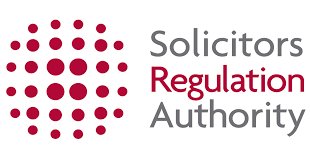
Statement of Changes in the Immigration Rules HC 590 introduces much higher new minimum income requirements (MIR) which were announced by the Home Office on 4 December 2023 in what the Home Secretary James Cleverly called his “five-point plan” to reduce immigration. The spouse/partner visa MIR will initially rise to £29,000 on 11 April 2024 and then incrementally increase to £34,500 sometime later in 2024, and then ultimately to £38,700. Overall, Statement of Changes in the Immigration Rules HC 590 introduces changes primarily concerning the MIR, Skilled Worker route, the EU Settlement Scheme, Immigration Salary List and Asylum, Appendix AR: Administrative Review EU and other minor changes to other policy areas. As to the Skilled Worker route, the changes aim to reduce net migration by increasing the general salary threshold from £26,200 to £38,700 and to bring the salary requirements for individual occupations in line with median pay for resident workers in those occupations and replacing the Shortage Occupation List with a new Immigration Salary List. Apparently, the changes are an attempt to encourage businesses to invest in the resident workforce rather than over-relying on migration. The reason to raise the MIR is that it was not increased for over a decade and no longer reflects the level of income required by a family to ensure they are self-sufficient and do not need to rely on public funds.
As to the EUSS, the changes expand the scope of the immediate settlement provisions in Appendix Victim of Domestic Abuse to include a spouse, civil partner or durable partner with pre-settled status under the EUSS (meaning that the relationship was formed before the end of the transition period on 31 December 2020), and their dependent children. In relation Skilled Workers, Sponsoring employers will need to pay Skilled Workers at least a general salary threshold or the going rate for the individual occupation, whichever is higher. Further, the general salary threshold is being raised from £26,200 (based on 25th percentile UK earnings in eligible occupations) to £38,700 (based on median UK earnings in eligible occupations). Going rates are also being raised from the 25th percentile to the median. The new thresholds and going rates are based on the latest Office for National Statistics (ONS) pay data. Workers sponsored for Health and Care visas, or in occupations where going rates are set using national pay scales, will be exempt from the new median salary requirements.
Instead, a general threshold based on the 25th percentile continues to apply, and is being updated from £26,200 to £29,000, based on the latest ONS pay data. Moreover, going rates are also being updated based on the latest ONS pay data and/or the latest available national pay scales. These updates also apply to Skilled Workers who are already in the route prior to these Rules taking effect, if they are making applications to extend their stay, change employment or settle before 4 April 2030.
Furthermore, the Shortage Occupation List is being removed and it will be replaced by a new Immigration Salary List, to make clearer that the entries on the list are those where the Government considers it sensible to offer a discounted salary threshold—rather than being a list of all occupations experiencing labour shortages.
The contents of the new list have been informed by a review carried out by the Migration Advisory Committee (MAC) which will carry out a full review of the list later in 2024.
As with the previous list, included occupations have a 20% discount to the general salary threshold (to £30,960 or £23,200, depending on whether they would otherwise be subject to the £38,700 or £29,000 threshold). However, the previous 20% discount to the going rate requirement is being removed.
All other existing Skilled Worker salary discounts, relating to holders of relevant PhD qualifications, “new entrants” to the labour market, and national pay scale occupations, are being retained and updated, based on the latest ONS pay data.The salary requirements for other work are being updated in line with the changes to the latest ONS pay data:
For Senior or Specialist Workers in the Global Business Mobility routes, the general salary threshold is being updated from £45,800 to £48,500, and going rates are being updated using the latest ONS pay data.
For Graduate Trainees in the Global Business Mobility routes, the general salary threshold is being updated from £24,220 to £25,410, and going rates remain based on 70% of the 25th percentile, updated to the latest ONS pay data.
For the Scale-up route, the general salary threshold is being updated from £34,600 to £36,300, and going rates are being updated using the latest ONS pay data.
For certain poultry workers in the Seasonal Workers route, who must be paid in line with Skilled Workers, the salary requirement is being raised from £26,200 and £10.75 per hour to £38,700 and £15.88 per hour.
As to the increase to the MIR for those in the five-year partner and child routes under Appendix FM, the change imposes a minimum income requirement of £29,000 for new applicants to the routes that is the 25th percentile of earnings for jobs which are eligible for Skilled Worker visas. Article 8 (the right to respect for private and family life) of the European Convention on Human Rights (ECHR) is a qualified right. This means that the rights of the individual can be lawfully outweighed by measures which are necessary in the interests of the economic well-being of the country. Maintaining immigration control constitutes such an interest.
According to the Home Office, these updated rules provide a clear basis for considering immigration cases in compliance with ECHR Article 8, reflecting the qualified nature of Article 8, setting requirements which properly balance the individual right to respect for private or family life with the public interest in safeguarding the economic well-being of the UK by controlling immigration, in protecting the public from foreign criminals and in protecting the rights and freedoms of others.
The Home Office had stated that the new MIR has been set at a level which is based on earnings as well as benefit levels to help ensure that migrants are more likely to make a net positive contribution to the public finances. There will no longer be a separate child element to the MIR.
This is to ensure that British nationals are not treated less favourably than migrants who are required to meet the General Skilled Worker threshold as a flat rate, regardless of any children being sponsored. There are transitional arrangements for those who, before 11 April, already have a Family visa within the fiancé(e) or proposed civil partner or five-year partner route, or who applied before 11 April and are being granted.
Once MIR has been met, the same MIR must be met through to settlement on the route, provided the applicant is applying to stay with the same partner. This will also be the case for children seeking to join or accompany a parent. These arrangements provide certainty for those already within the route, or who apply before the increase comes into force.
Existing exceptional circumstances and the need to safeguard and promote the welfare of children continue to apply. Those unable to meet the minimum income requirement may still be granted leave where: there are insurmountable obstacles to family life with their partner continuing outside the UK; it would not be reasonable for their child to leave the UK; or there are exceptional circumstances which would render refusal of the application a breach of ECHR Article 8 because it would result in unjustifiably harsh consequences for the applicant or their family. However, those who are granted visas on this basis are placed on a longer 10-year route to settlement, allocated in four separate tranches of 30-month periods.
There are also changes to continuous residence and a new Appendix Long Residence will be introduced. Notably, Appendix Long Residence replaces existing provisions in Part 7 (rules 276A-276D) of the Immigration Rules. Appendix Long Residence is drafted in line with the recommendations of the Law Commission. It is said that for greater consistency across immigration routes, the standard requirements within Appendix Continuous Residence, Appendix English Language and Appendix KOL UK (Knowledge of life in the UK) have been applied to the Long Residence route.
Moreover, Appendix Long Residence includes a policy change whereby applicants must have had their current permission for one year (or have been exempt from immigration control within the 12 months immediately before their application) to qualify for ILR or settlement on this route. The Home Office says that this aligns the requirements of this route with wider requirements for settlement. Appendix Long Residence also includes changes to standardise the conditions for grants of temporary permission to stay on the Long Residence route.
The new MIR from 11 April which is increased to £29,000 will increase to more than double from its original rate—increasing to £34,500 later in 2024—and then further to £38,700 in early 2025. It is estimated that the new threshold means that about 50% of employed British citizens will not be able satisfy the enhanced MIR which will rise to 70% by 2025.







